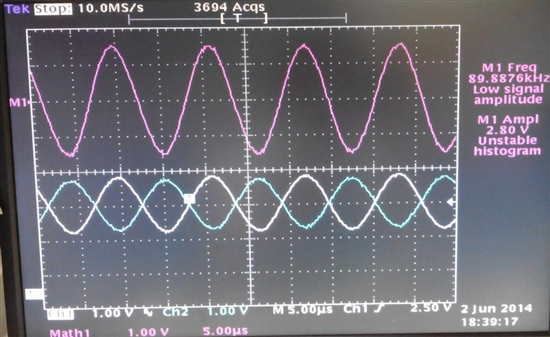Hi,
We are trying to measure the ripple in a 120 V dc source .The ripple is about 50mv P-P at 70 Khz. We are using AMC1200 for isolation.
The response of the Isolator is gradually degrading from a gain of 8 times to about unity in 10 minutes of powering the the circuit. We are clueless on the behavior and any pointers would be highly appreciated.
Here is the circuit,
Thanks,
Varaprasad.





